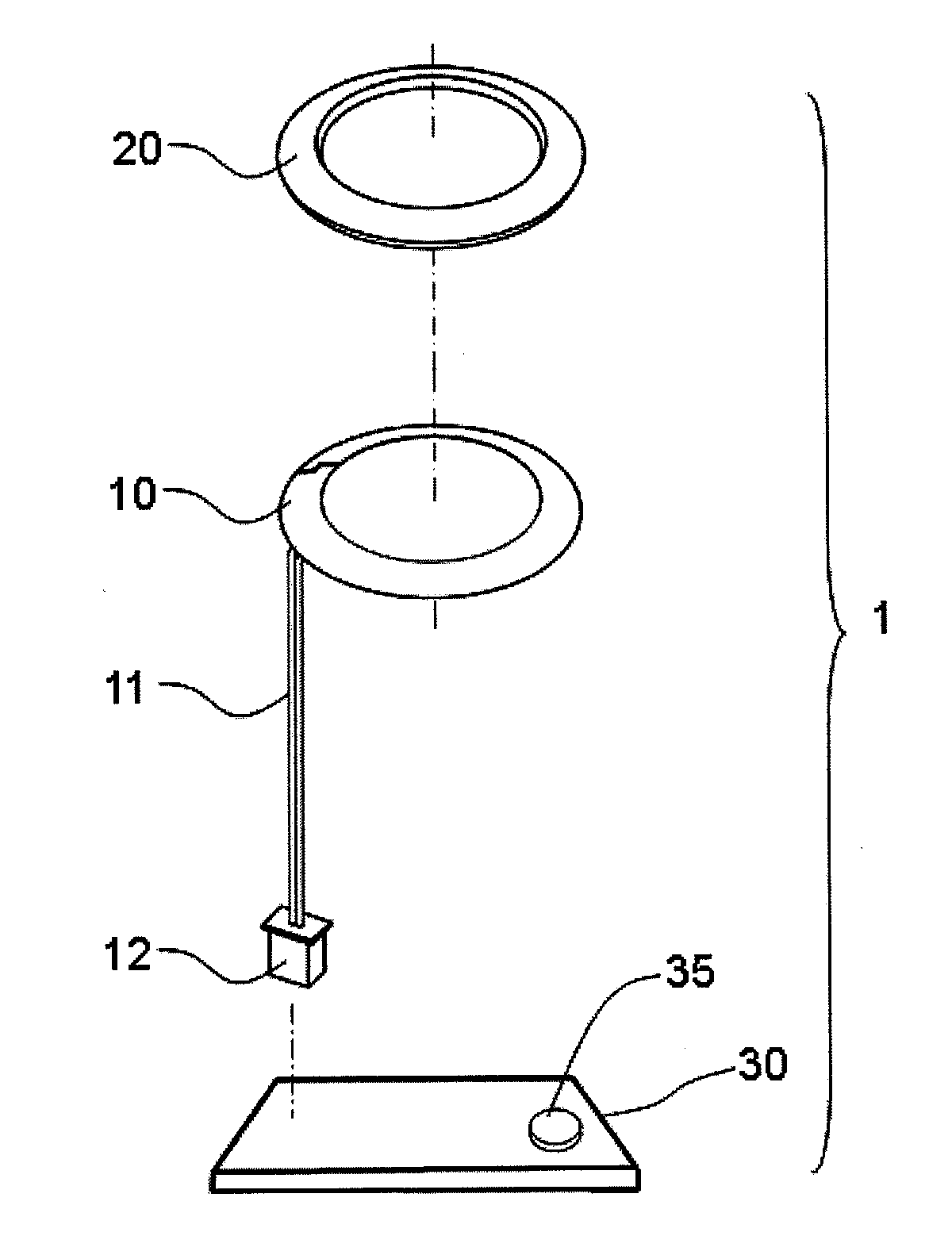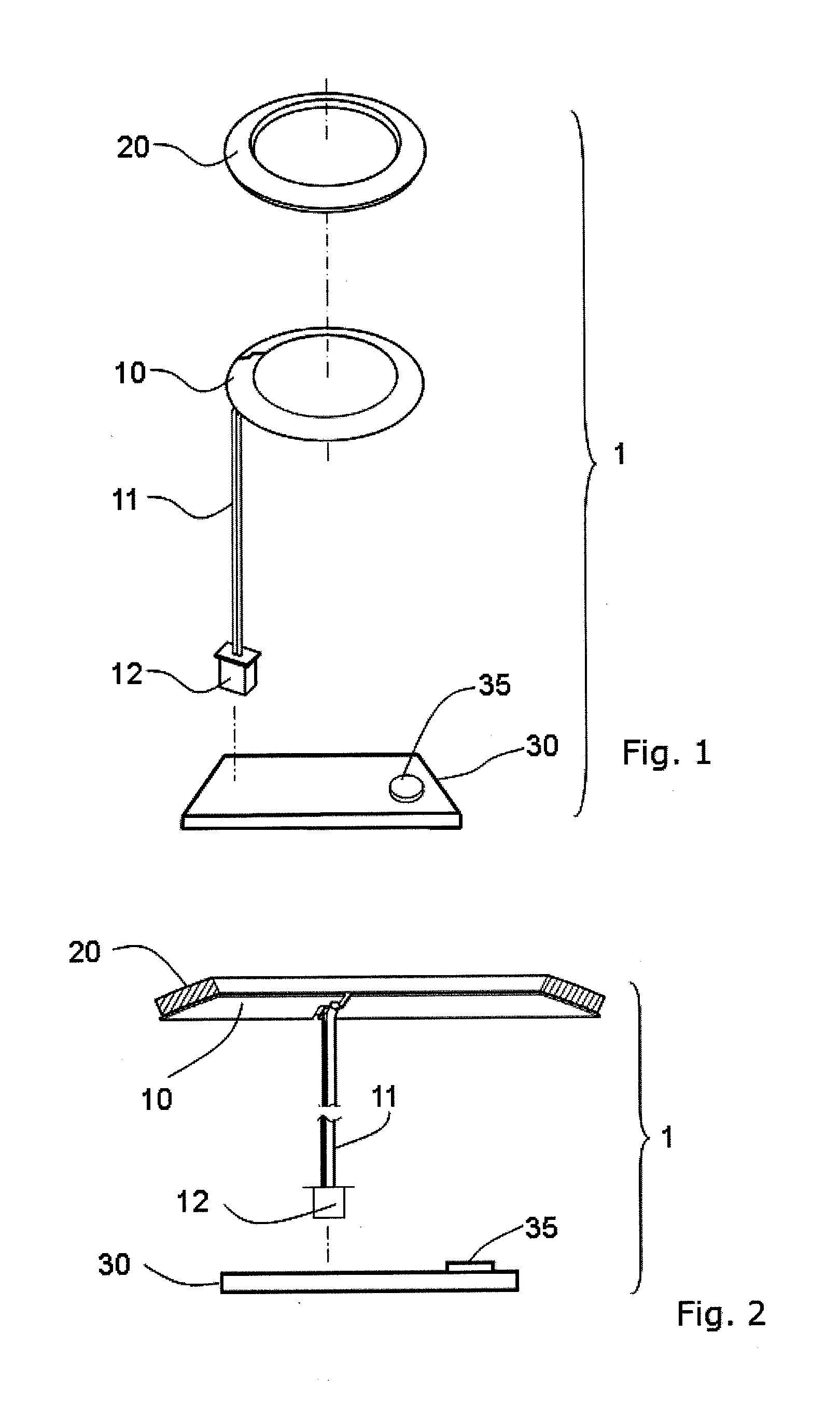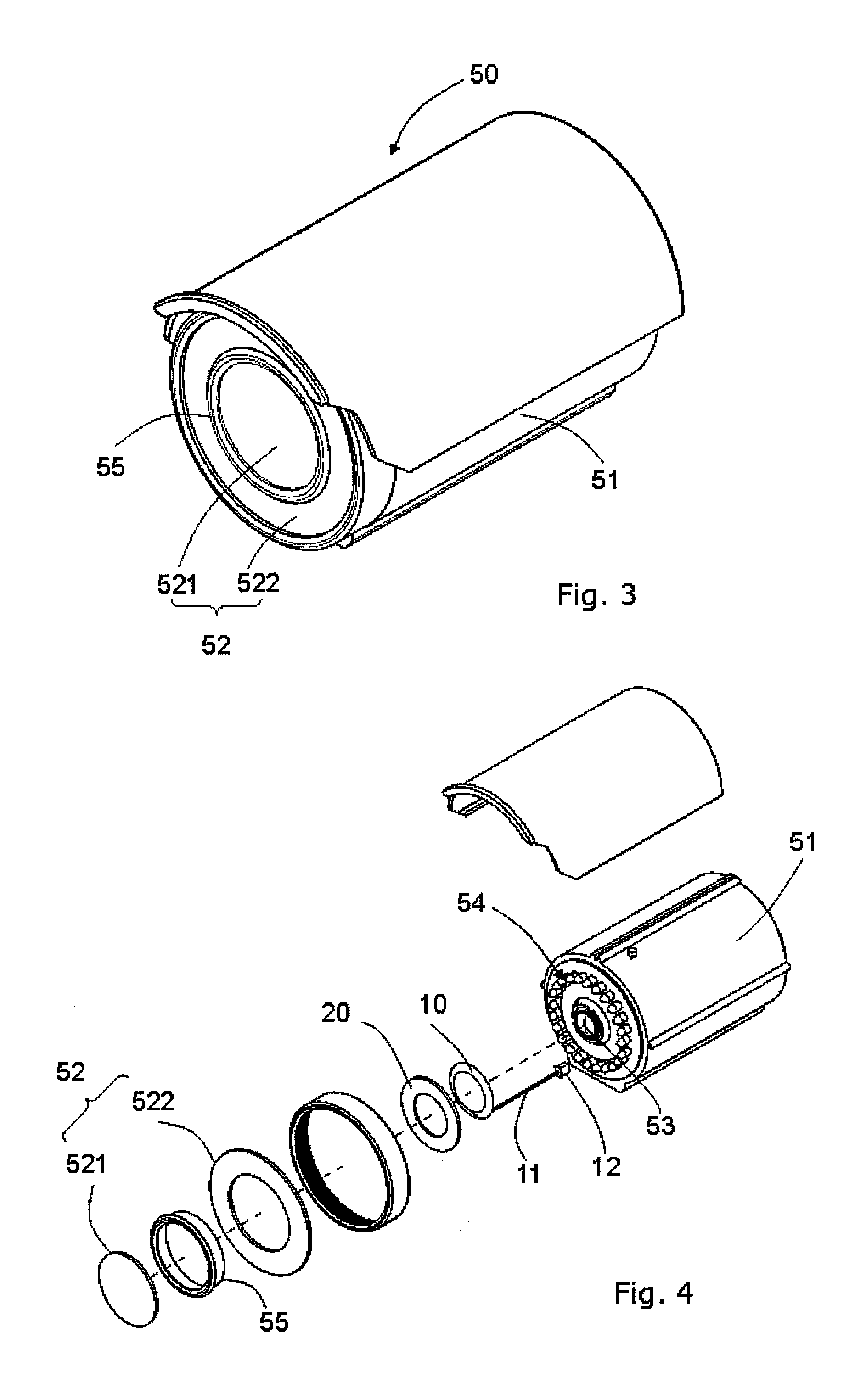Defogging and defrosting device for protective lens of a camera
a technology of protective lens and defrosting device, which is applied in the direction of camera filters, mountings, instruments, etc., can solve the problems of significant affecting the clarity of images, loss of lucidity of protective lens, blurred images captured by the camera
- Summary
- Abstract
- Description
- Claims
- Application Information
AI Technical Summary
Benefits of technology
Problems solved by technology
Method used
Image
Examples
first embodiment
[0022]In FIG. 3 to FIG. 6, the present invention of defogging and defrosting device (1) is used on a bullet camera (50). The external structure of the bullet camera (50) includes a protective shell (51) and a planar protective lens (52) assembled to the front of the protective shell (51). The lens (53) of the camera and the light module (54) is mounted inside the protective shell (51). The light module (54) includes a control circuit panel (54) and a LED light (542) coupled to the control circuit panel (541).
[0023]In this embodiment, the protective lens (52) is planar and the heater (10) and thermal gasket (20) are flat annular. The heater (10) is set on the control circuit panel (541) and the thermal gasket (20) is contacting with the heater (10). A heat transfer element (55) is contacting with the thermal gasket (20) with its bottom and with the protective lens (52) with its top. In the drawings, the protective lens (52) are mounted with 2 concentric mirrors or glass (521, 522) an...
second embodiment
[0024]As shown in FIG. 7 to FIG. 10, the present invention, the defogging and defrosting device (1) is used on a dome camera (40). The external structure of the dome camera (40) includes a protective shell (41) and a semi-spherical protective lens (42) mounted at front of the protective shell (41). The lens (43) and light module (44) of the camera (40) are mounted inside the protective shell (41). The light module (44) includes a control circuit panel (44) and a LED light (442) coupled to the control circuit panel (441). A supporting element (45) is mounted with its bottom on the control circuit panel (441) of the light module (44). The defogging and defrosting device (1) is fixed on the supportive element (45). In this embodiment, the protective lens (42) is semi-spherical and the heater (10) and thermal gasket (20) are annular with the torus declining from the center toward the circumference at a preset angle. Corresponding slot (451) in designed at the top of the supporting eleme...
third embodiment
[0025]As shown in FIG. 11 to FIG. 13, the present invention, the defogging and defrosting device (1) is used on a dome camera (60). The external structure of the dome camera (60) includes a protective shell (61) and a semi-spherical protective lens (62) mounted at front of the protective shell (61). The lens (63) and focus device (64) of the camera (60) are mounted on a holder (65) inside the protective shell (61). Several cylindrical components (661) surround the lens (63) and the focus device (64) in a concentric way and have their bottoms mounted on a fixing element (67). An annular bracket (662) is set on the top of cylindrical components (661). The heater (10) of the defogging and defrosting device (1) is mounted at the inner wall of the annular bracket (662) and the thermal gasket (20) is mounted at the locating slot (663) on the top of the annular bracket (662). The annular bracket (662) is an insulator with high thermal conductivity that allows the heat generated by the heat...
PUM
 Login to View More
Login to View More Abstract
Description
Claims
Application Information
 Login to View More
Login to View More - R&D
- Intellectual Property
- Life Sciences
- Materials
- Tech Scout
- Unparalleled Data Quality
- Higher Quality Content
- 60% Fewer Hallucinations
Browse by: Latest US Patents, China's latest patents, Technical Efficacy Thesaurus, Application Domain, Technology Topic, Popular Technical Reports.
© 2025 PatSnap. All rights reserved.Legal|Privacy policy|Modern Slavery Act Transparency Statement|Sitemap|About US| Contact US: help@patsnap.com



